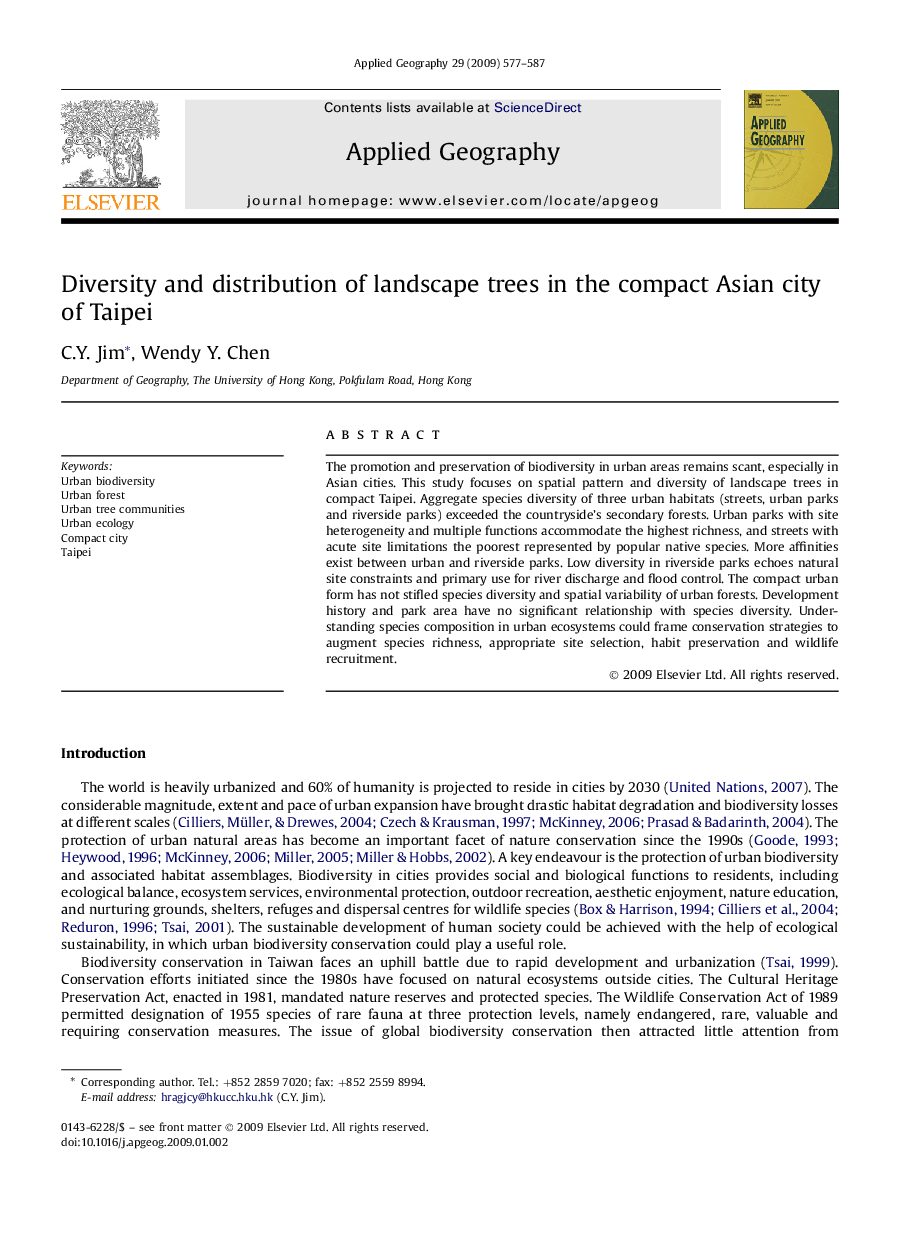| Article ID | Journal | Published Year | Pages | File Type |
|---|---|---|---|---|
| 83829 | Applied Geography | 2009 | 11 Pages |
The promotion and preservation of biodiversity in urban areas remains scant, especially in Asian cities. This study focuses on spatial pattern and diversity of landscape trees in compact Taipei. Aggregate species diversity of three urban habitats (streets, urban parks and riverside parks) exceeded the countryside's secondary forests. Urban parks with site heterogeneity and multiple functions accommodate the highest richness, and streets with acute site limitations the poorest represented by popular native species. More affinities exist between urban and riverside parks. Low diversity in riverside parks echoes natural site constraints and primary use for river discharge and flood control. The compact urban form has not stifled species diversity and spatial variability of urban forests. Development history and park area have no significant relationship with species diversity. Understanding species composition in urban ecosystems could frame conservation strategies to augment species richness, appropriate site selection, habit preservation and wildlife recruitment.
